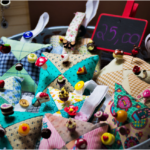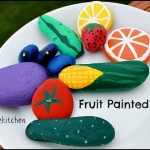When summer comes along, it can be hard to keep your kids entertained all of the time. They are no longer in the routine of heading to school and doing fun activities on the weekend – they need to be entertained all of the time. The good news is that we have put together some of the best ways that you can keep your kids entertained this summer. Keep reading to find out more. Create Something Together One of the best ways to keep your kids entertained is to spend … [Read more...]
5 Fun Art Activities to Involve Your Kids In
1. Rock Painting Rock painting is one of the most fun and inexpensive art projects you can get your kids involved in. The canvas for the painting - rocks - are totally free and you will have a gala of a time hunting for the perfect rocks with your kids. After you have selected the rocks that you would like to paint - mostly the ones with a smooth surface works the best. Set up a painting station - outdoors if you want. Rock painting is great for working outdoors because no paper is … [Read more...]
Fruit Painted Rocks #craft #kidsinthekitchen
Don't we all have pretty bowls and vases on our kitchen table filled with fruit, flowers and other lovely centerpieces. On our tables I have a bowl of fresh produce and on the other table I have a tray filled with junk. I'm talking about coupons, sunglasses, notebooks, beads and business cards. It's the catchall for the room. I gave Sabreena and Shae a task to make something pretty for the table. They hunted under our deck for very specific shaped river rocks and made a this bowl of … [Read more...]
TShirt Tote Bag #ExpressYourself #CBias
I was recently asked to come up with a craft for the #ExpressYourself campaign using Elmers Painters Paint Markers and fabric. The fabric part got me stumped. I thought I’d make Shae a cute shirt, draw a flower or fun saying on it but what’s so original and creative about that. Then it hit me, go DIY with it. I stood in the middle of my living room at a pile of laundry and I got the idea of making a t-shirt tote bag. I’ve seen tutorials before and figured this would be easy. I got the kids in … [Read more...]























